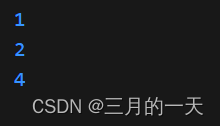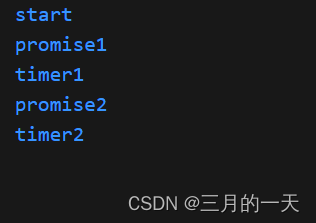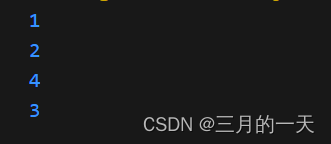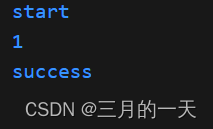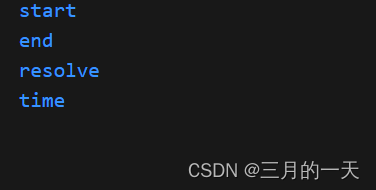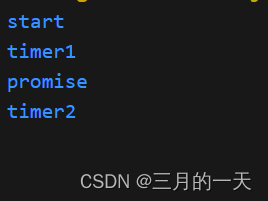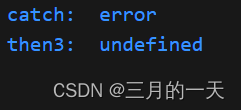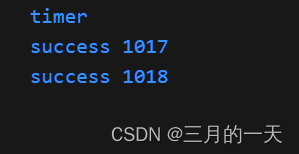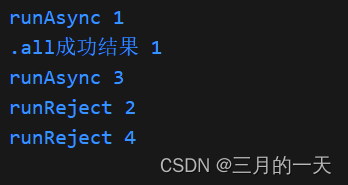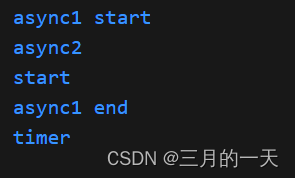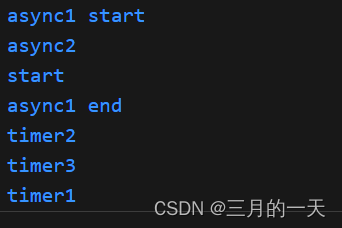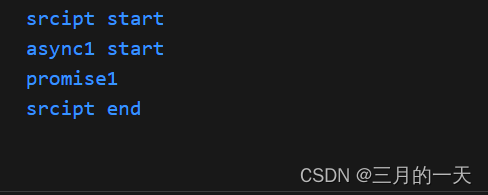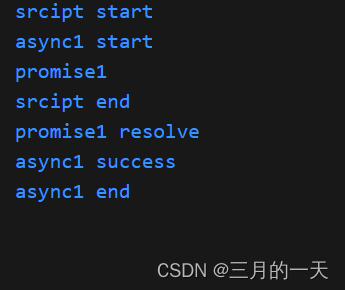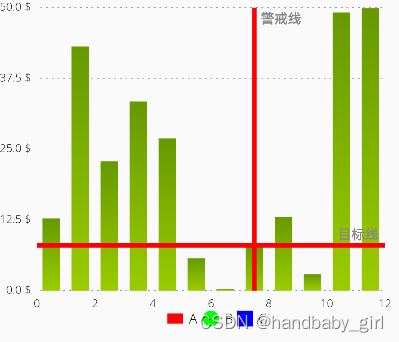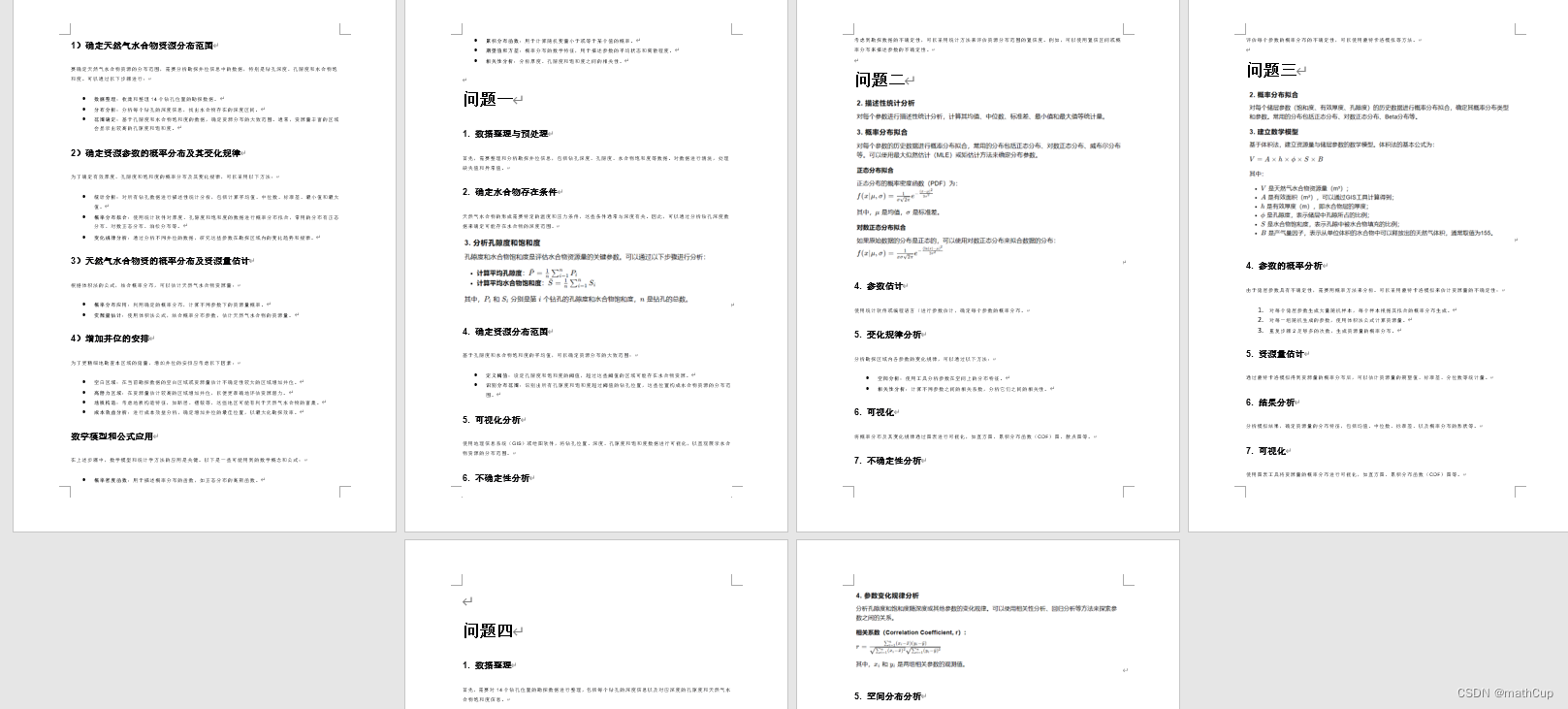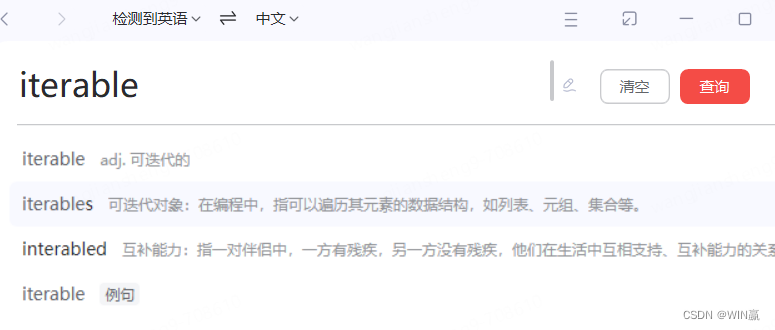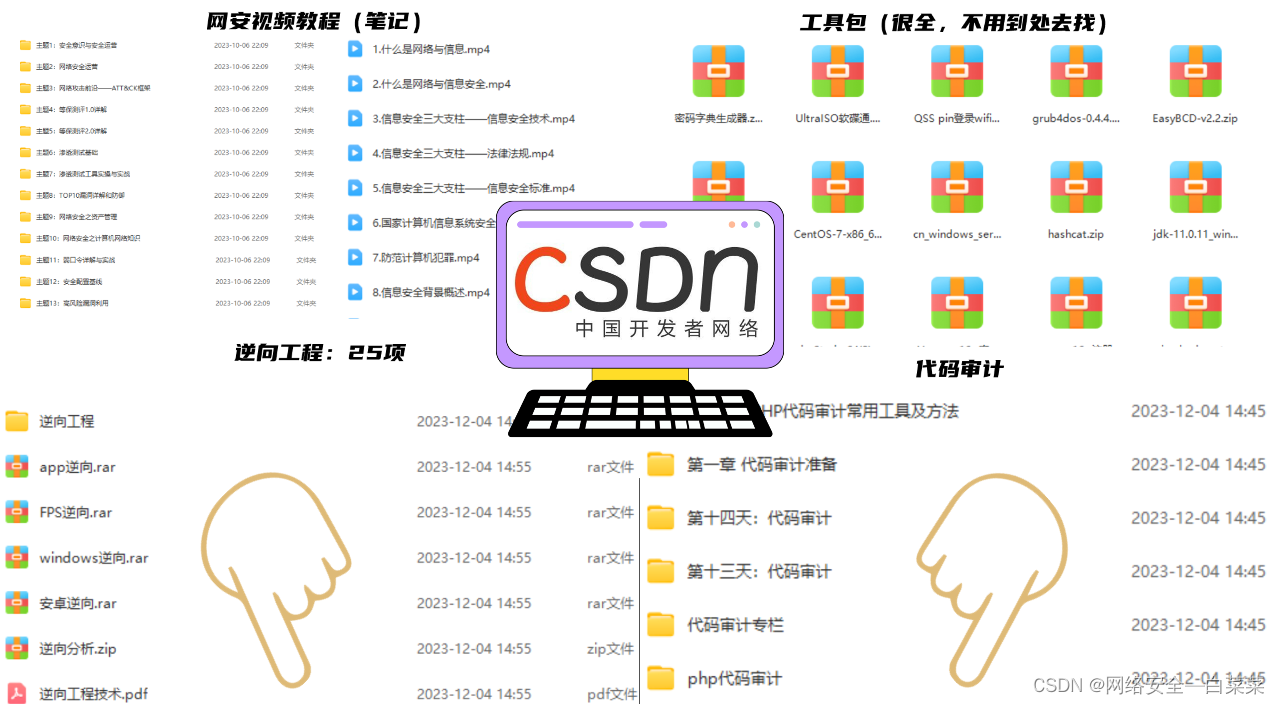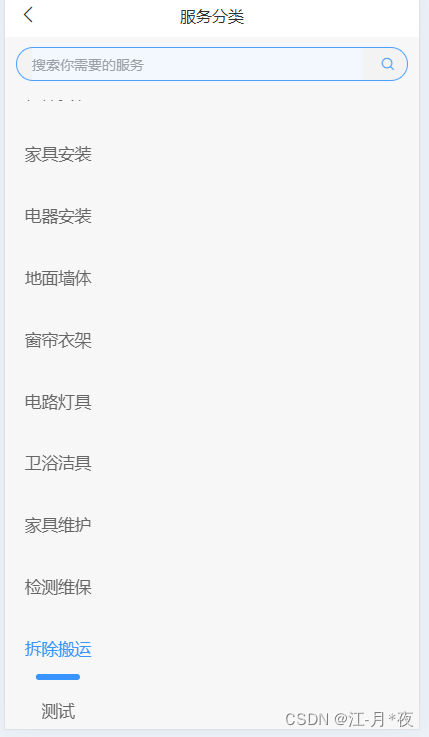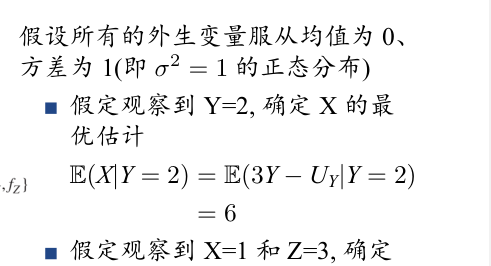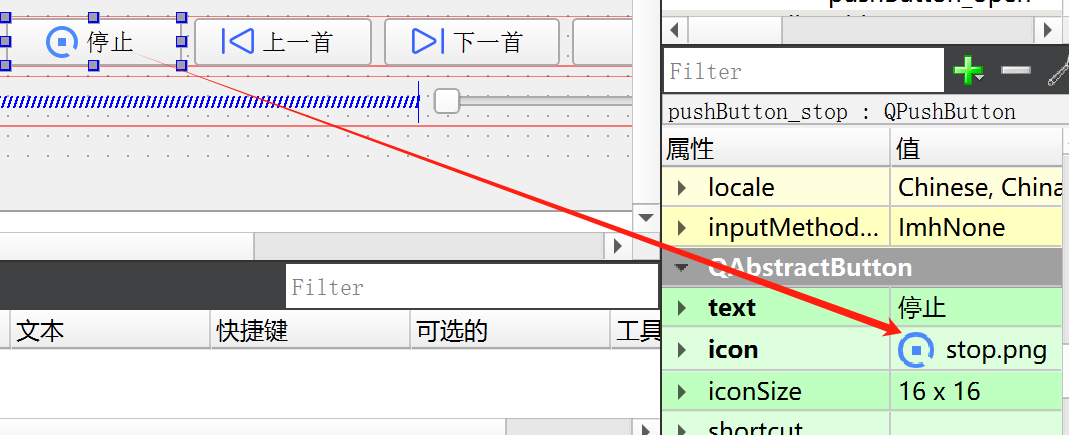Promise 是 JavaScript 中用于处理异步操作的对象,它代表了一个可能还没有完成的操作的最终完成或失败,以及其结果值。Promise 对象有三种状态:
- Pending(进行中):初始状态,既不是成功,也不是失败状态。
- Fulfilled(已成功):操作成功完成。
- Rejected(已失败):操作失败。
一个 Promise 对象一旦从 Pending 状态转变为 Fulfilled 或 Rejected,它的状态就不会再改变。
Promise 的核心原理包括:
- 构造函数:通过
new Promise(executor)创建 Promise 对象,其中executor是一个带有两个参数的函数,通常称为resolve和reject,它们分别用于将 Promise 状态改为 Fulfilled 和 Rejected。- 状态管理:Promise 对象的状态只能从 Pending 变为 Fulfilled 或从 Pending 变为 Rejected,一旦状态改变,就不能再变。
- 链式调用:通过
.then()和.catch()方法可以链式调用 Promise,处理异步操作的结果或错误。- 异步执行:Promise 的
executor函数是立即执行的,但其resolve和reject函数是异步调用的。- 错误处理:通过
.catch()方法或.then(null, onRejected)可以捕获链式调用中的错误。
你真的完全了解promise吗,请输出以下代码题的结果
const promise = new Promise((resolve, reject) => {console.log(1);console.log(2);
});
promise.then(() => {console.log(3);
});
console.log(4);
const promise1 = new Promise((resolve, reject) => {console.log('promise1')resolve('resolve1')
})
const promise2 = promise1.then(res => {console.log(res)
})
console.log('1', promise1);
console.log('2', promise2);
Promise.resolve().then(() => {console.log('promise1');const timer2 = setTimeout(() => {console.log('timer2')}, 0)
});
const timer1 = setTimeout(() => {console.log('timer1')Promise.resolve().then(() => {console.log('promise2')})
}, 0)
console.log('start');答案:
如果你回答的和答案不一致,请务必接收下面的Promise解题指南
Promise必备能力
Promise 是 JavaScript 中处理异步操作的一种机制,它代表了一个异步操作的最终完成或失败,并可以获取其结果。以下是 Promise 的关键知识点,掌握这些内容将有助于应对 Promise 相关的笔试题:
1. Promise 的基本概念
- 状态(State):一个 Promise 有三种状态:
pending(进行中)、fulfilled(已成功)和rejected(已失败)。- 结果(Result):Promise 的状态一旦从
pending变为fulfilled或rejected,就不再改变,且会有一个不可变的终值或拒因。
2. Promise 的创建
- 使用
new Promise(executor)构造函数创建 Promise,其中executor是一个带有两个参数的函数:resolve和reject,分别用于将 Promise 的状态变为fulfilled和rejected。
3. Promise 的方法
then(onFulfilled, onRejected):注册成功和失败时的回调函数,返回一个新的 Promise。catch(onRejected):注册失败时的回调函数,相当于.then(null, onRejected),返回一个新的 Promise。finally(onFinally):注册无论成功或失败都会执行的回调函数,返回一个新的 Promise。
4. Promise 链
.then和.catch方法返回的都是新的 Promise 实例,这允许链式调用,形成 Promise 链。- 链中的每个
.then或.catch都会返回一个新的 Promise,其状态和结果取决于前一个 Promise 的状态和回调函数的返回值。
5. Promise 的静态方法
Promise.resolve(value):返回一个以给定值解析的 Promise 对象。Promise.reject(reason):返回一个带有拒绝原因的 Promise 对象。Promise.all(iterable):返回一个 Promise,当 iterable 中所有 Promise 都 fulfilled 时,返回的 Promise 才会 fulfilled,其结果是一个包含所有 Promise 结果的数组。如果有一个 Promise 被 rejected,则返回的 Promise 立即 rejected,且结果为第一个被 rejected 的 Promise 的拒因。Promise.race(iterable):返回一个 Promise,一旦 iterable 中的某个 Promise fulfilled 或 rejected,返回的 Promise 就会采用相同的状态和结果。
6. Promise 的错误处理
- 未处理的 Promise 拒绝会被
unhandledrejection事件捕获。- 使用
.catch或.then(null, onRejected)可以捕获 Promise 链中的错误。
Promise 的性能考虑:Promise 的创建和执行是异步的,不会阻塞主线程。避免不必要的 Promise 创建,因为每个 Promise 都会占用一定的内存。
Promise 的局限性:Promise 一旦状态改变,就无法再次改变。Promise 没有提供取消异步操作的机制。
事件循环机制
事件循环(Event Loop)是 JavaScript 运行时环境中的一个重要概念,它与 Promise 的使用密切相关,因为 Promise 的回调是通过事件循环来执行的。理解事件循环机制有助于解决与异步编程、回调函数、Promise 和 async/await 等相关的问题。作为前端开发者,你必须要理解并掌握下面的内容:
- 理解事件循环的基本流程和宏任务、微任务的区别。
- 知道 Promise 的回调是如何通过事件循环执行的,以及为什么
.then和.catch的回调通常比setTimeout更快执行。- 应用到实际问题中,比如理解为什么在
setTimeout和Promise的回调中,await前的代码会立即执行,而await后的代码则在 Promise 解决后执行。- 理解事件循环与异步编程(如 async/await)的关系,以及如何避免回调地狱(Callback Hell)。
1. 事件循环的工作原理
-
宏任务(Macrotask):主要包括
setTimeout、setInterval、I/O 操作、UI 渲染(如浏览器的重绘和重排) -
微任务(Microtask):主要包括
Promise 的 .then和process.nextTick中的回调。 -
执行栈(Execution Context Stack):用于执行同步代码,每次执行栈空时,事件循环会从宏任务队列中取出一个宏任务执行,然后执行所有微任务,再继续取下一个宏任务。
-
事件循环的流程:
- 执行同步代码直到执行栈为空。
- 从宏任务队列中取出一个宏任务执行,执行完毕后执行所有微任务。
- 重复步骤 2 直到宏任务队列和微任务队列都空。
- 如果有新的微任务(如
process.nextTick),将其添加到微任务队列。
2. 与 Promise 的关系
- 当一个 Promise 被 resolve 或 reject 时,它会创建一个微任务,这个微任务会将回调函数添加到微任务队列中,等待执行。
.then和.catch的回调会在微任务队列中执行,这意味着它们会等待当前的宏任务和微任务执行完毕后才会运行。- 如果在回调中又创建了新的 Promise,会形成一个微任务链,直到微任务队列为空
注意:宏任务是一次执行一个,微任务是一次清空一个队列。两者有本质区别
Promise的几道基础题
1. 题目一
const promise1 = new Promise((resolve, reject) => {console.log('promise1')
})
console.log('1', promise1);
思路:Promise本身是同步的。从上至下,先遇到new Promise,执行该构造函数中的代码promise1。然后执行同步代码1,此时promise1没有被resolve或者reject,因此状态还是pending
答案:
2 题目二
const promise = new Promise((resolve, reject) => {console.log(1);resolve('success')console.log(2);
});
promise.then(() => {console.log(3);
});
console.log(4);
思路:从上至下,先遇到new Promise,执行其中的同步代码1
再遇到resolve('success'), 将promise的状态改为了resolved并且将值保存下来
继续执行同步代码2
跳出promise,往下执行,碰到promise.then这个微任务,将其加入微任务队列
执行同步代码4
本轮宏任务全部执行完毕,检查微任务队列,发现promise.then这个微任务且状态为resolved,执行它。
答案:
3 题目三
const promise = new Promise((resolve, reject) => {console.log(1);console.log(2);
});
promise.then(() => {console.log(3);
});
console.log(4);
思路:和题目二相似,只不过在
promise中并没有resolve或者reject。因此promise.then并不会执行,它只有在被改变了状态之后才会执行答案:
4 题目四
const promise1 = new Promise((resolve, reject) => {console.log('promise1')resolve('resolve1')
})
const promise2 = promise1.then(res => {console.log(res)
})
console.log('1', promise1);
console.log('2', promise2);
思路:从上至下,先遇到
new Promise,执行该构造函数中的代码promise1碰到
resolve函数, 将promise1的状态改变为resolved, 并将结果保存下来碰到
promise1.then这个微任务,将它放入微任务队列
promise2是一个新的状态为pending的Promise`执行同步代码1, 同时打印出
promise1的状态是resolved执行同步代码2,同时打印出
promise2的状态是pending宏任务执行完毕,查找微任务队列,发现
promise1.then这个微任务且状态为resolved,执行它。
5 题目五
const fn = () => (new Promise((resolve, reject) => {console.log(1);resolve('success')
}))
fn().then(res => {console.log(res)
})
console.log('start')
思路:fn函数它是直接返回了一个new Promise的,而且fn函数的调用是在start之前,所以它里面的内容应该会先执行。
答案:
6 题目六
如果把fn的调用放到start之后呢?
const fn = () =>new Promise((resolve, reject) => {console.log(1);resolve("success");});
console.log("start");
fn().then(res => {console.log(res);
});
思路:fn是一个函数,只有在函数调用的时候才会执行。因此先执行console.log("start"),再处理fn,之后是then方法
答案:
Promise结合setTimeout
Promise通常会结合事件循环机制进行考察异步输出结果
1 题目一
console.log('start')
setTimeout(() => {console.log('time')
})
Promise.resolve().then(() => {console.log('resolve')
})
console.log('end')
思路:刚开始整个脚本作为一个宏任务来执行,对于同步代码直接压入执行栈进行执行,因此先打印出start和end。
setTimout作为一个宏任务被放入宏任务队列(下一个)
Promise.then作为一个微任务被放入微任务队列
本次宏任务执行完,检查微任务,发现Promise.then,执行它
接下来进入下一个宏任务,发现setTimeout,执行。
答案:
2. 题目二
const promise = new Promise((resolve, reject) => {console.log(1);setTimeout(() => {console.log("timerStart");resolve("success");console.log("timerEnd");}, 0);console.log(2);
});
promise.then((res) => {console.log(res);
});
console.log(4);
思路:从上至下,先遇到new Promise,执行该构造函数中的代码1
然后碰到了定时器,将这个定时器中的函数放到下一个宏任务的延迟队列中等待执行 执行同步代码2
跳出promise函数,遇到promise.then,但其状态还是为pending,这里理解为先不执行 执行同步代码4
一轮循环过后,进入第二次宏任务,发现延迟队列中有setTimeout定时器,执行它
首先执行timerStart,然后遇到了resolve,将promise的状态改为resolved且保存结果并将之前的promise.then推入微任务队列
继续执行同步代码timerEnd
宏任务全部执行完毕,查找微任务队列,发现promise.then这个微任务,执行它
答案:
3 题目三
题目三分了两个题目,因为看着都差不多,不过执行的结果却不一样,大家不妨先猜猜下面两个题目分别执行什么:
setTimeout(() => {console.log('timer1');setTimeout(() => {console.log('timer3')}, 0)
}, 0)
setTimeout(() => {console.log('timer2')
}, 0)
console.log('start')
setTimeout(() => {console.log('timer1');Promise.resolve().then(() => {console.log('promise')})
}, 0)
setTimeout(() => {console.log('timer2')
}, 0)
console.log('start')
思路:分析代码,还是先执行同步代码;然后将setTimeout放入宏任务队列中。对于第一个题,同步执行完,宏任务队列执行,输出timer1,此时又遇到一个setTimeout,继续加入队列,并从队头取出timer2并输出。
对于第二个代码:先执行同步代码,输出start;然后执行setTimeout,输出timer1,遇到微任务promise.resolve.then,此时promise的状态也是resolve,因此可以执行then。并且then是微任务,timer1之后后执行微任务,输出promise。
答案:
第一个输出结果
第二个输出结果
4.题目四
Promise.resolve().then(() => {console.log('promise1');const timer2 = setTimeout(() => {console.log('timer2')}, 0)
});
const timer1 = setTimeout(() => {console.log('timer1')Promise.resolve().then(() => {console.log('promise2')})
}, 0)
console.log('start');
思路:刚开始整个脚本作为第一次宏任务来执行,我们将它标记为宏1,从上至下执行。
遇到Promise.resolve().then这个微任务,将then中的内容加入第一次的微任务队列标记为微1
遇到定时器timer1,将它加入下一次宏任务的延迟列表,标记为宏2,等待执行(先不管里面是什么内容)
执行宏1中的同步代码start
第一次宏任务(宏1)执行完毕,检查第一次的微任务队列(微1),发现有一个promise.then这个微任务需要执行
执行打印出微1中同步代码promise1,然后发现定时器timer2,将它加入宏2的后面,标记为宏3
第一次微任务队列(微1)执行完毕,执行第二次宏任务(宏2),首先执行同步代码timer1
然后遇到了promise2这个微任务,将它加入此次循环的微任务队列,标记为微2
宏2中没有同步代码可执行了,查找本次循环的微任务队列(微2),发现了promise2,执行它
第二轮执行完毕,执行宏3,打印出timer2
5.题目五
const promise1 = new Promise((resolve, reject) => {setTimeout(() => {resolve('success')}, 1000)
})
const promise2 = promise1.then(() => {throw new Error('error!!!')
})
console.log('promise1', promise1)
console.log('promise2', promise2)
setTimeout(() => {console.log('promise1', promise1)console.log('promise2', promise2)
}, 2000)
思路:从上至下,先执行第一个new Promise中的函数,碰到setTimeout将它加入下一个宏任务列表。跳出new Promise,碰到promise1.then这个微任务,但其状态还是为pending,这里理解为先不执行。
- promise2是一个新的状态为pending的Promise
- 执行同步代码console.log('promise1'),且打印出的promise1的状态为pending
- 执行同步代码console.log('promise2'),且打印出的promise2的状态为pending
- 碰到第二个定时器,将其放入下一个宏任务列表
- 第一轮宏任务执行结束,并且没有微任务需要执行,因此执行第二轮宏任务
- 先执行第一个定时器里的内容,将promise1的状态改为resolved且保存结果并将之前的promise1.then推入微任务队列
- 该定时器中没有其它的同步代码可执行,因此执行本轮的微任务队列,也就是promise1.then,它抛出了一个错误,且将promise2的状态设置为了rejected
- 第一个定时器执行完毕,开始执行第二个定时器中的内容
- 打印出'promise1',且此时promise1的状态为resolved
- 打印出'promise2',且此时promise2的状态为rejected
'promise1' Promise{<pending>} 'promise2' Promise{<pending>} test5.html:102 Uncaught (in promise) Error: error!!! at test.html:102 'promise1' Promise{<resolved>: "success"} 'promise2' Promise{<rejected>: Error: error!!!}
6.题目六
如果你上面这道题搞懂了之后,我们就可以来做做这道了,你应该能很快就给出答案:
const promise1 = new Promise((resolve, reject) => {setTimeout(() => {resolve("success");console.log("timer1");}, 1000);console.log("promise1里的内容");
});
const promise2 = promise1.then(() => {throw new Error("error!!!");
});
console.log("promise1", promise1);
console.log("promise2", promise2);
setTimeout(() => {console.log("timer2");console.log("promise1", promise1);console.log("promise2", promise2);
}, 2000);
思路:promise的then方法一定要在promise本身执行并且resolve的时候才会执行
答案:
'promise1里的内容' 'promise1' Promise{<pending>} 'promise2' Promise{<pending>} 'timer1' test5.html:102 Uncaught (in promise) Error: error!!! at test.html:102 'timer2' 'promise1' Promise{<resolved>: "success"} 'promise2' Promise{<rejected>: Error: error!!!}
Promise中的then、catch、finally
- Promise 的状态一经改变(resolve 或 reject),就不能再改变。
.then和.catch返回一个新的 Promise。.catch能捕获上层的错误,无论被连接到哪里。- 在 Promise 中,返回任意一个非 Promise 的值都会被包裹成 Promise 对象。
- 如果 Promise 内部的状态一经改变,并且有了一个值,那么后续每次调用
.then或.catch都会直接拿到该值。- 在
.then或.catch中返回一个 error 对象并不会抛出错误,不会被后续的.catch捕获。.then或.catch返回的值不能是 Promise 本身,否则会造成死循环。.then或.catch的参数期望是函数,传入非函数会发生值穿透。.then方法可以接收两个参数,第一个是处理成功的函数,第二个是处理失败的函数。.catch可以认为是.then第二个参数的简便写法。.finally方法也是返回一个 Promise,在 Promise 结束时(resolved 或 rejected)都会执行里面的回调函数。
1 题目一
const promise = new Promise((resolve, reject) => {resolve("success1");reject("error");resolve("success2");
});
promise
.then(res => {console.log("then: ", res);}).catch(err => {console.log("catch: ", err);})
思路:考察promise的状态之后被更改一次
答案:
"then: success1"
2 题目二
const promise = new Promise((resolve, reject) => {reject("error");resolve("success2");
});
promise.then((res) => {console.log("then1: ", res);}).then((res) => {console.log("then2: ", res);}).catch((err) => {console.log("catch: ", err);}).then((res) => {console.log("then3: ", res);});
思路:先被reject改变状态。因此promise不会走then方法,而是被catch捕获。catch不管放在哪个位置都能捕获到error。同时catch默认返回一个新的promise,通过then方法输出then3
答案:
3 题目三
Promise.resolve(1).then(res => {console.log(res);return 2;}).catch(err => {return 3;}).then(res => {console.log(res);});
思路:Promise通过.resolve手动更改Promise状态,因此执行then方法。return 2会被包装成resolve(2)
4.题目四
const promise = new Promise((resolve, reject) => {setTimeout(() => {console.log('timer')resolve('success')}, 1000)
})
const start = Date.now();
promise.then(res => {console.log(res, Date.now() - start)
})
promise.then(res => {console.log(res, Date.now() - start)
})
思路:Promise被执行一次,但Promise的then和catch可以被执行多次
答案:
5 题目五
Promise.resolve().then(() => {return new Error('error!!!')
}).then(res => {console.log("then: ", res)
}).catch(err => {console.log("catch: ", err)
})
思路:通过new Error不会抛出错误,而是一个Promise包装的对象。这里的return new Error('error!!!')也被包裹成了return Promise.resolve(new Error('error!!!'))
- 你可能想到的是进入.catch然后被捕获了错误。
- 结果并不是这样的,它走的是.then里面:
答案:
6. 题目六
Promise.resolve(1).then(2).then(Promise.resolve(3)).then(console.log)
思路:.then 或者 .catch 的参数期望是函数,传入非函数则会发生值穿透。
第一个then和第二个then中传入的都不是函数,一个是数字类型,一个是对象类型,因此发生了穿透,将resolve(1) 的值直接传到最后一个then里。
7.题目七
下面来介绍一下.then函数中的两个参数。
第一个参数是用来处理Promise成功的函数,第二个则是处理失败的函数。 也就是说Promise.resolve('1')的值会进入成功的函数,Promise.reject('2')的值会进入失败的函数。
让我们来看看这个例子
Promise.reject('err!!!').then((res) => {console.log('success', res)}, (err) => {console.log('error', err)}).catch(err => {console.log('catch', err)})
思路:then方法的第二个参数接收一个回调,如果Promise失败,执行then的第二个参数。这里的执行结果是:'error' 'error!!!'
而如果把第二个参数去掉,就进入了catch()中:
Promise.reject('err!!!').then((res) => {console.log('success', res)}).catch(err => {console.log('catch', err)})
执行结果:
'catch' 'error!!!'
但是有一个问题,如果是这个案例呢?
Promise.resolve().then(function success (res) {throw new Error('error!!!')}, function fail1 (err) {console.log('fail1', err)}).catch(function fail2 (err) {console.log('fail2', err)})
思路:如果是then里面的方法抛出错误会被外面的catch住,而不会走then的第二个参数。由于Promise调用的是resolve(),因此.then()执行的应该是success()函数,可是success()函数抛出的是一个错误,它会被后面的catch()给捕获到,而不是被fail1函数捕获。
因此执行结果为:
fail2 Error: error!!!at success
8.题目八
接着来看看.finally(),这个功能一般不太用在面试中,不过如果碰到了你也应该知道该如何处理。
function promise1 () {let p = new Promise((resolve) => {console.log('promise1');resolve('1')})return p;
}
function promise2 () {return new Promise((resolve, reject) => {reject('error')})
}
promise1().then(res => console.log(res)).catch(err => console.log(err)).finally(() => console.log('finally1'))promise2().then(res => console.log(res)).catch(err => console.log(err)).finally(() => console.log('finally2'))
思路:finally方法不管promise是什么状态都会执行'promise1' '1' 'error' 'finally1' 'finally2'
Promise中的all和race
- 在做下面的题目之前,让我们先来了解一下Promise.all()和Promise.race()的用法。
- 通俗来说,.all()的作用是接收一组异步任务,然后并行执行异步任务,并且在所有异步操作执行完后才执行回调。
.race()的作用也是接收一组异步任务,然后并行执行异步任务,只保留取第一个执行完成的异步操作的结果,其他的方法仍在执行,不过执行结果会被抛弃。
1. 题目一
function runAsync(x) {const p = new Promise((resolve) =>setTimeout(() => {console.log(x);resolve(x);}, 1000));return p;
}
Promise.all([runAsync(1), runAsync(2), runAsync(3)]).then(res => console.log(res))
思路:并行执行多个异步操作,并且在一个回调中处理所有的返回数据。
- all()后面的.then()里的回调函数接收的就是所有异步操作的结果。
- 而且这个结果中数组的顺序和Promise.all()接收到的数组顺序一致
2 题目二
新增一个runReject函数,它用来在1000 * x秒后reject一个错误。
function runAsync(x) {const p = new Promise((resolve) =>setTimeout(() => {console.log("runAsync", x);resolve(x);}, 1000));return p;
}
function runReject(x) {const p = new Promise((resolve, reject) =>setTimeout(() => {console.log("runReject", x);reject(`Error: ${x}`);}, 1000 * x));return p;
}Promise.all([runAsync(1), runReject(4), runAsync(3), runReject(2)]).then((res) => console.log(".all成功结果", res)).catch((err) => console.log(".all失败结果", err));
思路:
Promise.all接收一个 Promise 数组,这里包含两个runAsync和两个runReject的调用。Promise.all会等待所有 Promise 全部成功解决后返回一个结果数组,如果其中任何一个 Promise 拒绝,它会立即返回拒绝的 Promise 的结果。具体执行过程如下:
runAsync(1)和runAsync(3)同时启动,因为它们的setTimeout都设置为1秒,所以它们会在1秒后打印 "runAsync 1" 和 "runAsync 3",然后各自解决并返回1和3。runReject(4)和runReject(2)同时启动,它们的setTimeout根据传入的参数设置为4秒和2秒。runReject(4)在4秒后拒绝,打印 "runReject 4" 和 "Error: 4",返回一个拒绝的 Promise。runReject(2)在2秒后拒绝,打印 "runReject 2" 和 "Error: 2",同样返回一个拒绝的 Promise。.catch是会捕获最先的那个异常,在这道题目中最先的异常就是runReject(2)的结果答案:
3 题目三
将上一题的Promise.all改成Promise.race
function runAsync(x) {const p = new Promise((resolve) =>setTimeout(() => {console.log("runAsync", x);resolve(x);}, 1000));return p;
}
function runReject(x) {const p = new Promise((resolve, reject) =>setTimeout(() => {console.log("runReject", x);reject(`Error: ${x}`);}, 1000 * x));return p;
}Promise.race([runAsync(1), runReject(4), runAsync(3), runReject(2)]).then((res) => console.log(".all成功结果", res)).catch((err) => console.log(".all失败结果", err));思路:使用.race()方法,它只会获取最先执行完成的那个结果,其它的异步任务虽然也会继续进行下去,不过race已经不管那些任务的结果了 。Promise.race的then方法只会返回第一个成功的Promise返回结果。
如果第一个成功的是reject状态呢
Promise.race([runReject(0),runAsync(1),runReject(4),runAsync(3),runReject(2),
]).then((res) => console.log(".all成功结果", res)).catch((err) => console.log(".all失败结果", err));那么将返回失败的结果,也就是Promise.race后的catch方法

async/await的几道题
既然谈到了Promise,那就肯定得再说说async/await,在很多时候async和Promise的解法差不多,又有些不一样。不信你来看看题目一。
1. 题目一
async function async1() {console.log("async1 start");await async2();console.log("async1 end");
}
async function async2() {console.log("async2");
}
async1();
console.log('start')
思路:
- 首先一进来是创建了两个函数的,我们先不看函数的创建位置,而是看它的调用位置 发现async1函数被调用了,然后去看看调用的内容
- 执行函数中的同步代码async1 start,之后碰到了await,它会阻塞async1后面代码的执行,因此会先去执行async2中的同步代码async2,然后跳出async1
- 跳出async1函数后,执行同步代码start
- 在一轮宏任务全部执行完之后,再来执行刚刚await后面的内容async1 end。
答案:

2. 题目二
async function async1() {console.log("async1 start");await async2();console.log("async1 end");
}
async function async2() {setTimeout(() => {console.log('timer')}, 0)console.log("async2");
}
async1();
console.log("start")
思路:
这段代码中,首先执行
async1()函数。在async1()函数中,遇到await async2()时会暂停async1()函数的执行,等待async2()函数执行完毕。然而,在async2()函数中,虽然有一个setTimeout,但是它是一个宏任务,会被放入事件队列中等待执行,而不会阻塞当前的微任务执行。因此,执行顺序如下:
- 执行
async1()函数,打印出 "async1 start"。- 遇到
await async2(),暂停async1()函数的执行,转而执行async2()函数。- 在
async2()函数中,首先打印出 "async2",然后设置了一个 0 秒后执行的setTimeout,但是这个setTimeout是一个宏任务,会被放入事件队列中等待执行。- 继续执行主程序,打印出 "start"。
- 主程序执行完毕后,开始执行微任务队列中的任务,继续执行
async1()函数中的剩余部分,打印出 "async1 end"。- 最后,事件队列中的宏任务执行,执行
setTimeout中的回调函数,打印出 "timer"。
3.题目三
async function async1() {console.log("async1 start");await async2();console.log("async1 end");setTimeout(() => {console.log('timer1')}, 0)
}
async function async2() {setTimeout(() => {console.log('timer2')}, 0)console.log("async2");
}
async1();
setTimeout(() => {console.log('timer3')
}, 0)
console.log("start")
其实如果你能做到这里了,说明你前面的那些知识点也都掌握了,我就不需要太过详细的步骤分析了。注意:await后面是微任务,打印start后,先去async1里将await后面的微任务执行完
4.题目四
async function async1 () {console.log('async1 start');await new Promise(resolve => {console.log('promise1')})console.log('async1 success');return 'async1 end'
}
console.log('srcipt start')
async1().then(res => console.log(res))
console.log('srcipt end')
思路:在async1中await后面的Promise是没有返回值的,也就是它的状态始终是pending状态,因此相当于一直在await,await,await却始终没有响应...所以在await之后的内容是不会执行的,也包括async1后面的 .then。
5.题目五
在上题基础上给Promise加上resolve
async function async1 () {console.log('async1 start');await new Promise(resolve => {console.log('promise1')resolve('promise1 resolve')}).then(res => console.log(res))console.log('async1 success');return 'async1 end'
}
console.log('srcipt start')
async1().then(res => console.log(res))
console.log('srcipt end')
